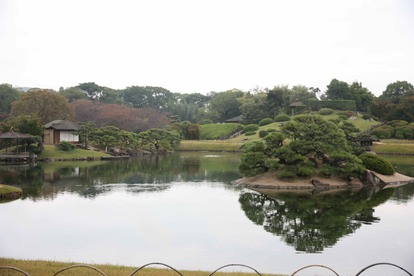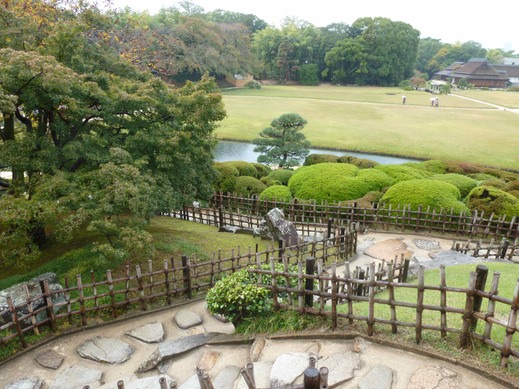
Back outside, Madam said she'd enjoyed the exercise, so that was fine, and we spent the next little while strolling around the gardens in a clockwise direction, snapping away and admiring the layout of something that is, as you'd expect from the reputation, something special.
One of the three most beautiful traditional gardens in Japan, Okayama Korakuen was constructed on local feudal lord, Ikeda Tsunamasa’s orders between 1687 and 1700. There have been a few changes over three centuries since then, but the garden is still pretty much the way it was in the days when it served as a venue to entertain the ruling family and a location for receiving important guests.
Korakuen, however, wasn’t the original name. It was originally called Koen (later garden) since it was built after Okayama Castle but since it was built in the spirit of sen-yu-koraku (grieve earlier than others, enjoy later than others, a famous Confucian quote stating that a wise ruler must attend to his subjects' needs first and only then attend to his own) the name changed to Korakuen in 1871.

The garden was designed in the Chisan Kaiyu (scenic promenade landscaped around a large pond) style which presents visitors with a new view at every turn of the path which connects the lawns, ponds, hills, tea houses, and streams. The garden suffered flood damage in 1934 and was bombed during World War II, but has always been restored to its original state thanks to accurate records kept by the garden's designers, Edo Period paintings and Ikeda family records and documents.
It’s a spacious, but fairly typical Japanese landscape garden, with a hill that serves as a lookout point. Unlike most gardens of this type, however, it also features spacious lawns (18,500 square metres out of a total area of 133,000 square metres), groves of plum, cherry and maple trees, tea and rice fields, an archery range and a crane aviary.
Having taken our time strolling through the gardens, we wandered back out the main entrance, crossed the bridge and looped back t'other tram stop nearest the Castle and Garden combination. A tram back down to the station seemed like the way to go, since we hadn't booked seats for the next short leg to Hiroshima. Time in these matters can be of the essence, and efficiency of movement is a key factor, so we headed back to the hotel first, grabbed the Little Red Travelling Bag and Madam's backpack from the cloakroom, arriving to discover that the reserved seats on the train we'd been planning to catch had all been sold.